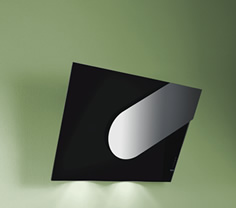(BPT) – Can you imagine keeping your windows open all winter long? The heat loss, cold drafts and all that money spent on wasted energy would be staggering. But if your home has folding pull-down attic stairs, a whole-house fan, a fireplace or clothes dryer, you may be doing the equivalent of leaving the windows open every day.
Drafts from these often overlooked spaces waste energy and cost you big in the form of higher energy bills. They are also the largest source of heating and cooling loss in the home.
Most homeowners are well aware of the benefits that caulk and weather-stripping provide to minimize energy loss and drafts. But what can you do about drafts from the four largest energy leaks in your home – the folding attic stairs, the whole house fan, the fireplace and the clothes dryer? Here are some tips and techniques that can easily, quickly and inexpensively seal and insulate these areas.
Attic stairs
When attic stairs are installed, a large hole (approximately 10 square feet) is created in your ceiling. The ceiling and insulation that were there have to be removed, leaving only a thin, unsealed, sheet of plywood.
Because your attic space is ventilated directly to the outdoors, the attic space can be very cold in the winter, and in the summer it can be very hot. And what is separating your conditioned house from your unconditioned attic? Only a thin sheet of plywood.
Try this yourself: at night, turn on the attic light and shut the attic stairway door. If you see any light coming through, it means your heated and air-conditioned air is leaking out of these large gaps in your home, 24-hours a day.
An easy, low-cost solution to this problem is to add an insulated attic stair cover that seals the stairs and stops drafts and energy loss. Add the desired amount of insulation over the cover to restore the insulation removed from the ceiling.
Whole-house fans and air-conditioning vents
When whole-house fans are installed, a large hole (up to 16 square feet or larger) is created in your ceiling. The ceiling and insulation that were there have to be removed, leaving only the drafty ceiling shutter between you and the outdoors.
An easy solution to this problem is to add a whole house fan shutter seal. Made from white textured flexible insulation, you simply install the seal over the ceiling shutter, secure it with Velcro, and trim it to fit.
The shutter seal can also be used to seal and insulate air conditioning vents, and is easily removed when desired.
Fireplaces
It’s ironic that while fireplaces are intended to heat up a house, they can create some seriously cold drafts.
Fireplaces, especially during the winter heating season, are energy losers. One study showed that an open damper on an unused fireplace in a well-insulated house can raise overall heating-energy consumption by 30 percent. Another recent study showed that for many consumers, their heating bills may be more than $500 higher each winter because of the drafts and wasted energy caused by fireplaces.
Even if the damper is shut, it’s not air-tight, and glass doors don’t stop the drafts either. Your chimney is an opening that leads directly outdoors – just like an open window and like a giant straw sucking your expensive heated or air-conditioned air right out of your house!
A simple way to avoid this problem is to add a Fireplace Plug to your fireplace. Available from Battic Door, a company known for their energy conservation products, the Fireplace Plug is an inflatable pillow that seals the fireplace damper, eliminating drafts, odors, and noise. The pillow is removed whenever the fireplace is used, then reinserted after.
Clothes dryer exhaust ducts
In many homes, the room with the clothes dryer is the coldest room in the house. In the winter, cold drafts come in through the duct, through your dryer and into your house. Many dryer vents use a sheet-metal flapper to try to reduce these drafts. This is very primitive technology that does not provide a positive seal to stop the drafts.
Compounding the problem is that over time, lint clogs the flapper valve, causing it to stay open.
A surprisingly simple solution to this problem is to add a dryer vent seal. This will reduce unwanted drafts, and also keeps out pests, bees and rodents. The vent will remain closed unless the dryer is in use. When the dryer is in use, a floating shuttle rises to allow warm air, lint and moisture to escape.
For more information on Battic Door’s energy conservation solutions and products for your home, visit www.batticdoor.com or, to request a free catalog, send a self-addressed stamped envelope to P.O. Box 15, Mansfield, MA 02048.


